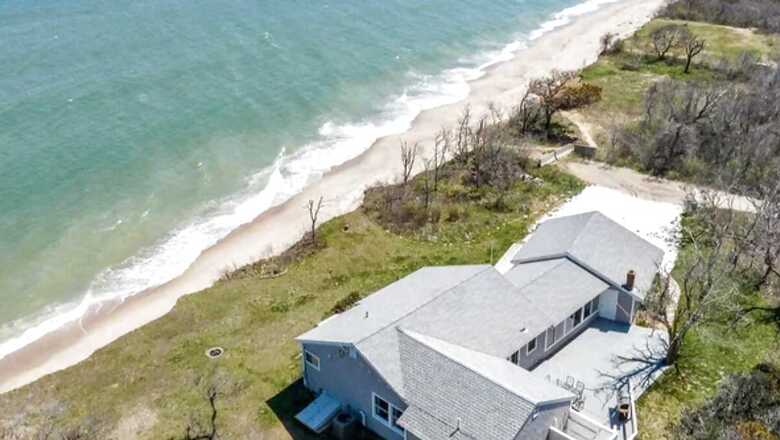
views
A 59-year-old interior painter and designer has bought a beachfront home in Cape Cod for $395,000 (Rs 3.31 crore) despite a warning from specialists. David Moot purchased a property in Massachusetts which is in danger of falling into the Atlantic Ocean within the next 10 years.
The three-bedroom house, located at 157 Brownell Road, Eastham, was built just 25 feet from an eroding sand cliff, making it a high-risk purchase. Experts estimate that rising tides could bring the water’s edge three feet closer to the house annually, putting the structure in danger of collapse within a decade.
Moot’s purchase is indicative of the trend whereby buyers want to get into new property developments at cheap prices especially as they are being affected by climate change. The home was originally listed for $1.195 million in 2022, but Moot secured it for 67% lower price due to concerns over coastal erosion and rising sea levels, Bloomberg reported.
“Life’s too short, and I just said to myself, ‘Let’s just see what happens,’” Moot stated, acknowledging the risks associated with his new home. “It’s going to eventually fall into the ocean, and it may or may not be in my lifetime”.
In an interview with the Boston Globe, Moot said that before finalising the purchase in December 2023 he sought opinions from engineers who estimated the erosion rates and discussed measures to curtail erosion including growing beach grass that helps to stabilise the sandy ground as well as relocating some part of the house away from the cliff.
He said he wanted to stay for as long as he possibly could and hopes he can contribute to providing the experience to other people like patients with terminal diseases.
According to Stephen Leatherman, a professor and director of the laboratory for coastal research at Florida International University, the average loss on Cape Cod is three feet per year and eight out of ten beaches on the East Coast have the same problem.
Speaking to The Guardian, Leatherman raised awareness about the dangers of buying houses close to the shore due to the infrequent but potent force of winter storms that can dramatically decrease the width of the beach, thus raising the threat to homes.















Comments
0 comment